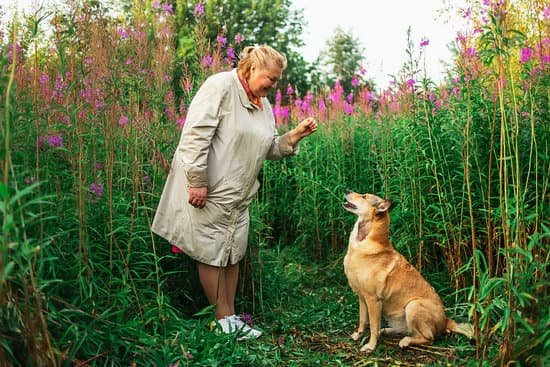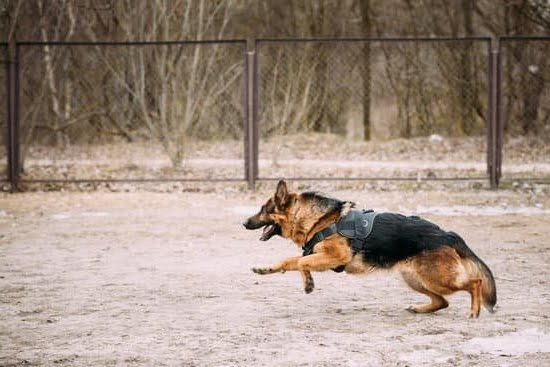Are you looking to learn how to train a dog to walk without a leash? Off-leash walking can provide numerous benefits for both dogs and their owners.
From improved physical exercise to mental stimulation, allowing your furry friend to roam freely can help strengthen the bond between you and your pet. In this article, we will explore the various aspects of off-leash walking, including understanding your dog’s behavior, building a strong bond, obedience training, gradual introduction to off-leash walking, positive reinforcement techniques, overcoming challenges, and advanced training methods.
Off-leash walking allows dogs to enjoy a sense of freedom and exploration while also providing them with the opportunity for increased exercise and socialization. Understanding your dog’s behavior and needs is crucial in ensuring a successful off-leash experience. Building a strong bond with your dog is also essential for effective communication and trust during off-leash walks.
In order to successfully train your dog to walk without a leash, it is important to teach them basic obedience commands such as “come,” “stay,” and “heel.” Additionally, gradual introduction to off-leash walking in safe and controlled environments is key in building confidence and trust between you and your dog.
Using positive reinforcement techniques and rewards can help encourage good behavior and reinforce obedience during off-leash walks. Stay tuned as we delve into these topics further in the following sections.
Understanding Your Dog’s Behavior and Needs
Before embarking on the journey of training your dog to walk without a leash, it is crucial to understand your dog’s behavior and needs. Every dog is unique, and their behavior is influenced by factors such as breed, age, and past experiences. Understanding these factors will help you tailor your training approach to suit your dog’s specific needs.
Firstly, it’s essential to recognize that dogs are social animals that thrive on routine and structure. They also have natural instincts and behaviors that drive their actions, such as exploring their surroundings, following scents, and responding to auditory stimuli. By understanding these instincts, you can work with your dog’s natural tendencies rather than against them when training them to walk without a leash.
Additionally, different breeds have different energy levels and exercise requirements. For example, high-energy breeds like Border Collies or Australian Shepherds will require more vigorous exercise compared to low-energy breeds like Bulldogs or Basset Hounds. Understanding your dog’s breed-specific needs will help you create a suitable off-leash walking routine that meets their physical and mental stimulation requirements.
Furthermore, taking into account any past experiences or traumas your dog may have had is crucial in understanding their behavior. Dogs that have been rescued from shelters or have had negative experiences in the past may require additional patience and understanding during the training process. By recognizing and addressing these factors, you can create a training plan that considers your dog’s individual needs for successful off-leash walking.
| Factor | Consideration |
|---|---|
| Breed | High-energy vs. low-energy breeds |
| Past experiences | Rescued dogs or those with trauma may need extra patience |
| Instincts | Dogs’ natural tendencies for exploration and responding to stimuli |
Building a Strong Bond With Your Dog
- Regular positive interactions: Spend quality time with your dog every day, whether it’s through playtime, training sessions, or simply cuddling on the couch. This will help them feel loved and secure in their relationship with you.
- Understand your dog’s body language: Paying attention to your dog’s body language and behavior will help you better understand their needs and emotions. This understanding will further deepen the bond between you and your pet.
- Consistent training: Consistency is key when it comes to training your dog. Using positive reinforcement techniques such as treats, praise, and toys can help create a strong foundation for trust in your relationship.
In addition to these tips, incorporating activities like agility training or interactive games into your routine can also help build a stronger bond with your dog. By taking the time to nurture this relationship, you’ll find that off-leash walking becomes not only achievable but also an incredibly rewarding experience for both you and your furry companion.
Remember that building a strong bond takes time and patience, so be sure to stay committed to the process in order to enjoy the benefits of off-leash walking with a well-connected and responsive pup.
Teaching Basic Obedience Commands
Basic obedience commands are essential for teaching a dog to walk without a leash. These commands provide the foundation for effective communication and control, making off-leash walking a safer and more enjoyable experience for both you and your dog.
Focus on Recall
One of the most important obedience commands for off-leash walking is the recall command. Teaching your dog to come when called is crucial for their safety and freedom during off-leash walks. Start by practicing recall in a low-distraction environment, gradually increasing the level of distraction as your dog becomes more consistent in their response.
Mastering Sit, Stay, and Leave It
In addition to recall, mastering commands such as sit, stay, and leave it can also be beneficial for off-leash walking. “Sit” and “stay” help you maintain control over your dog’s movements, while “leave it” can prevent them from getting into potentially dangerous situations while off-leash.
Consistency and Patience
Training a dog to walk without a leash requires consistency, patience, and positive reinforcement. Always use clear and consistent cues for each command, and be patient with your dog as they learn. Utilize rewards such as treats, praise, or playtime to reinforce good behavior during training sessions.
By teaching these basic obedience commands to your dog, you’ll build a strong foundation for successful off-leash walking and enjoy a closer bond with your furry companion.
Gradual Introduction to Off-Leash Walking
When it comes to teaching your dog to walk without a leash, it’s important to start slow and gradually introduce them to the concept. Begin by first mastering basic obedience commands such as “sit,” “stay,” and “come” in a controlled environment before considering off-leash walking. This will ensure that your dog has a solid foundation of obedience and responsiveness to your commands.
One effective method for introducing off-leash walking is using a long training leash or a retractable leash. This will give your dog the freedom to roam a bit while still having the security of being connected to you. It’s crucial during this phase to practice in low-distraction environments and gradually increase the level of distractions as your dog becomes more comfortable and adept at following your commands.
As you progress with off-leash training, it’s essential to be patient and consistent with your efforts. All dogs have different learning curves, so it’s important to go at their pace and not rush the process. By taking the time to gradually introduce off-leash walking, you’ll build trust and confidence between you and your furry companion.
| Gradual Introduction Tips | Benefits |
|---|---|
| Master basic obedience commands first | Builds trust and confidence between you and your dog |
| Use a long training leash or retractable leash | Provides security while allowing freedom for exploration |
| Practice in low-distraction environments initially | Makes the learning process smoother for your dog |
Using Positive Reinforcement and Rewards
When it comes to training your dog to walk without a leash, positive reinforcement and rewards play a crucial role in shaping their behavior. By using these techniques, you can encourage your dog to follow your commands and behave appropriately during off-leash walks.
Understanding the Power of Positive Reinforcement
Positive reinforcement involves rewarding your dog for good behavior, such as obeying commands or staying by your side during walks. This can be done through treats, praise, or toys. By associating their good behavior with something positive, your dog is more likely to repeat that behavior in the future. It’s important to deliver the reward immediately after the desired behavior occurs so that your dog makes the connection between their action and the reward.
Choosing the Right Rewards
When using positive reinforcement, it’s essential to choose rewards that are enticing for your dog. This could be their favorite treats, a few minutes of playtime with their favorite toy, or verbal praise with an enthusiastic tone. By understanding what motivates your dog, you can effectively use rewards to encourage them to walk without a leash and follow your commands. Make sure to vary the rewards so that they remain exciting and unpredictable for your furry friend.
By incorporating positive reinforcement and rewards into your training sessions, you can motivate your dog to behave well during off-leash walks and strengthen the bond between you and your furry companion. Remember that every dog is unique, so it may take some trial and error to find the most effective rewards for your pet. With patience and consistency, you can train a dog to walk without a leash while enjoying quality time together outdoors.
Overcoming Common Challenges and Safety Measures
When it comes to training a dog to walk without a leash, there are common challenges that dog owners may encounter. One of the challenges is dealing with distractions such as other animals, people, or even environmental stimuli. It’s important to gradually expose your dog to these distractions and use positive reinforcement to encourage them to stay focused on you during off-leash walks.
Another challenge is ensuring the safety of your dog and others while walking without a leash. It’s crucial to have a solid recall command in place before attempting off-leash walks. Practice the recall command in various environments and use high-value treats or rewards to reinforce it. Additionally, always be mindful of potential hazards in the environment such as traffic, unfamiliar dogs, or unsafe terrain.
To overcome these common challenges and ensure safety during off-leash walks, consistency is key. Set clear boundaries for your dog and consistently reinforce obedience commands. Keep practicing basic obedience commands like “sit,” “stay,” and “come” in different environments to help your dog generalize their training. This will also help build confidence in your dog’s ability to obey commands even when they are off-leash.
By understanding the common challenges associated with off-leash walking and implementing safety measures, you can enjoy the freedom and benefits of walking your dog without a leash while maintaining control and ensuring their well-being. With patience, consistency, and positive reinforcement, you can overcome these challenges and strengthen the bond with your furry companion through off-leash walks.
Advanced Training Techniques for Off-Leash Walking
After mastering the basics of off-leash walking, you may want to take your dog’s training to the next level with advanced techniques. These techniques will help ensure that your dog remains well-behaved and responsive even in distracting environments. Here are some advanced training techniques for off-leash walking:
1. Distraction Training: To prepare your dog for real-life scenarios, it is important to practice off-leash walking in environments with various distractions. Start in a quiet park and gradually work up to busier areas such as streets with pedestrians and other dogs. Use positive reinforcement to encourage focus and obedience during these sessions.
2. Boundary Training: Teach your dog invisible boundaries using visual cues or physical markers, such as cones or flags. This helps them understand their working area when off-leash and prevents them from straying too far. With consistency and rewards, they will learn to respect these boundaries even without a leash.
3. Emergency Recall: A reliable recall command is crucial for off-leash walking. Practice this by calling your dog back to you from different distances and rewarding them generously when they respond promptly. Make sure to use a consistent verbal cue and hand signal for this command.
It is important to note that advanced training techniques require patience, consistency, and dedication. Always prioritize your dog’s safety by gradually introducing new challenges and reinforcing positive behavior through rewards and praise.
By implementing these advanced training techniques for off-leash walking, you can further enhance the bond with your canine companion while enjoying freedom and flexibility during walks without compromising safety or control.
Conclusion
In conclusion, training your dog to walk without a leash can significantly enhance the bond between you and your furry companion. By understanding your dog’s behavior and needs, building a strong bond through positive reinforcement, and teaching basic obedience commands, you can create a level of trust that allows for off-leash walking.
It is important to remember that gradual introduction to off-leash walking is key, as well as overcoming common challenges and implementing safety measures to ensure a successful experience.
Taking the time to train your dog for off-leash walking not only provides physical exercise, but also mental stimulation and an opportunity for them to explore their surroundings freely. Through advanced training techniques and consistent practice, both you and your dog can enjoy the freedom and mutual trust that comes with off-leash walks. This type of activity also allows for greater interaction with other dogs and humans in open spaces, promoting socialization skills and overall well-being.
Ultimately, enjoying a stronger connection with your dog through off-leash walks is an incredibly rewarding experience. The sense of freedom, trust, and companionship developed through this kind of training strengthens the bond between you and your pet. By incorporating positive reinforcement, patience, and consistency into the training process, both you and your dog can reap the many benefits of walking without a leash.
Frequently Asked Questions
Can You Train Your Dog to Walk Without a Leash?
Training your dog to walk without a leash is possible, but it requires consistent and patient training. Start by teaching your dog basic obedience commands and then gradually introduce off-leash training in a safe and enclosed area.
How Do I Get My Dog to Stop Running Away Without a Leash?
To get your dog to stop running away without a leash, it’s important to address the underlying reason for their behavior. This could be boredom, fear, or simply the desire to explore. Providing enough physical and mental stimulation, using positive reinforcement, and ensuring a strong recall command can help prevent your dog from running away.
Is It Better to Walk Dog With or Without Leash?
It is generally better to walk dogs with a leash for safety reasons. A leash provides control over your dog, preventing them from running into dangerous situations or getting lost.
However, in certain controlled environments such as fenced-in areas designed for off-leash play, walking without a leash can provide exercise and freedom for your pet while still ensuring their safety.

Welcome to the blog! I am a professional dog trainer and have been working with dogs for many years. In this blog, I will be discussing various topics related to dog training, including tips, tricks, and advice. I hope you find this information helpful and informative. Thanks for reading!





